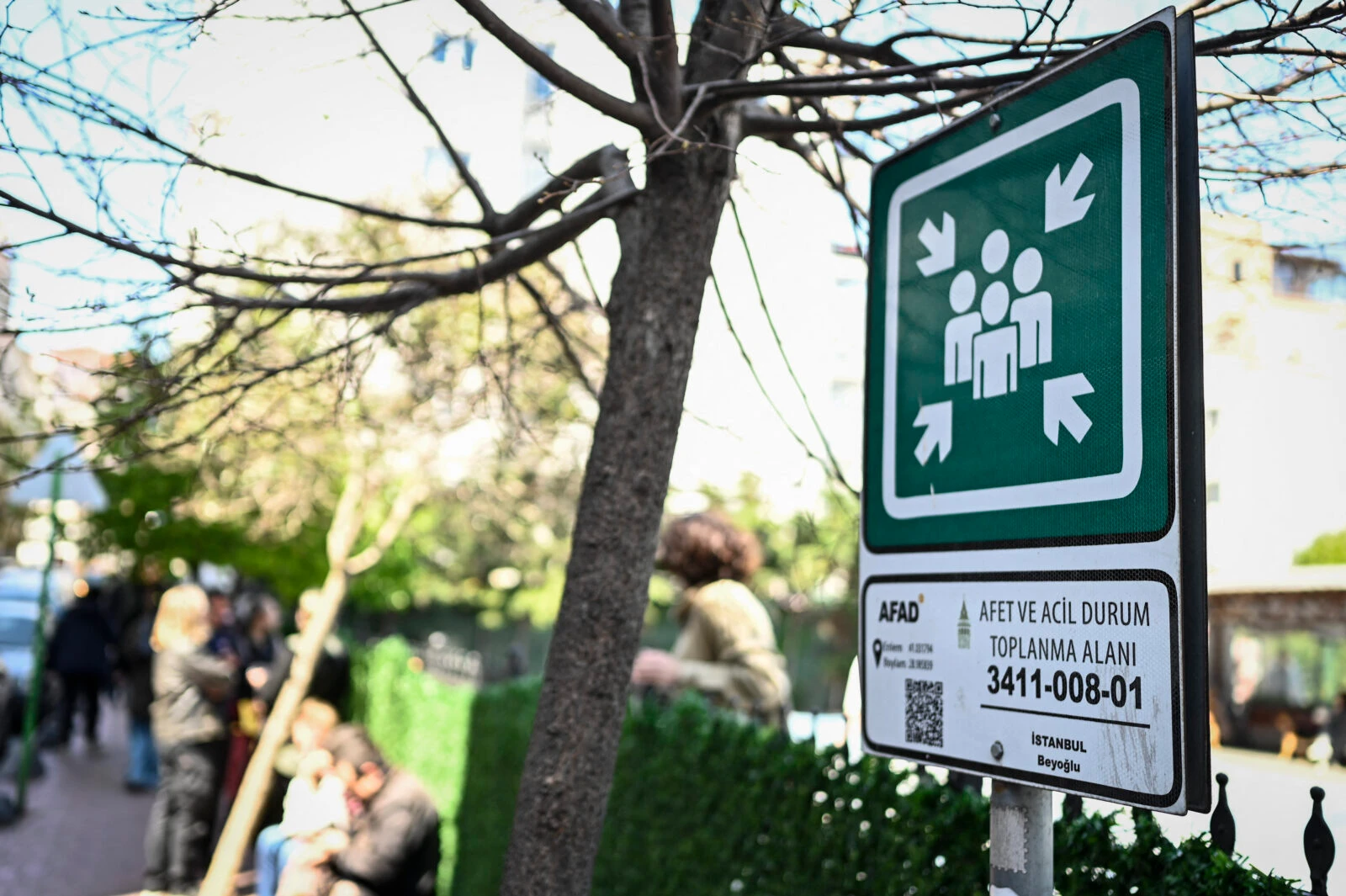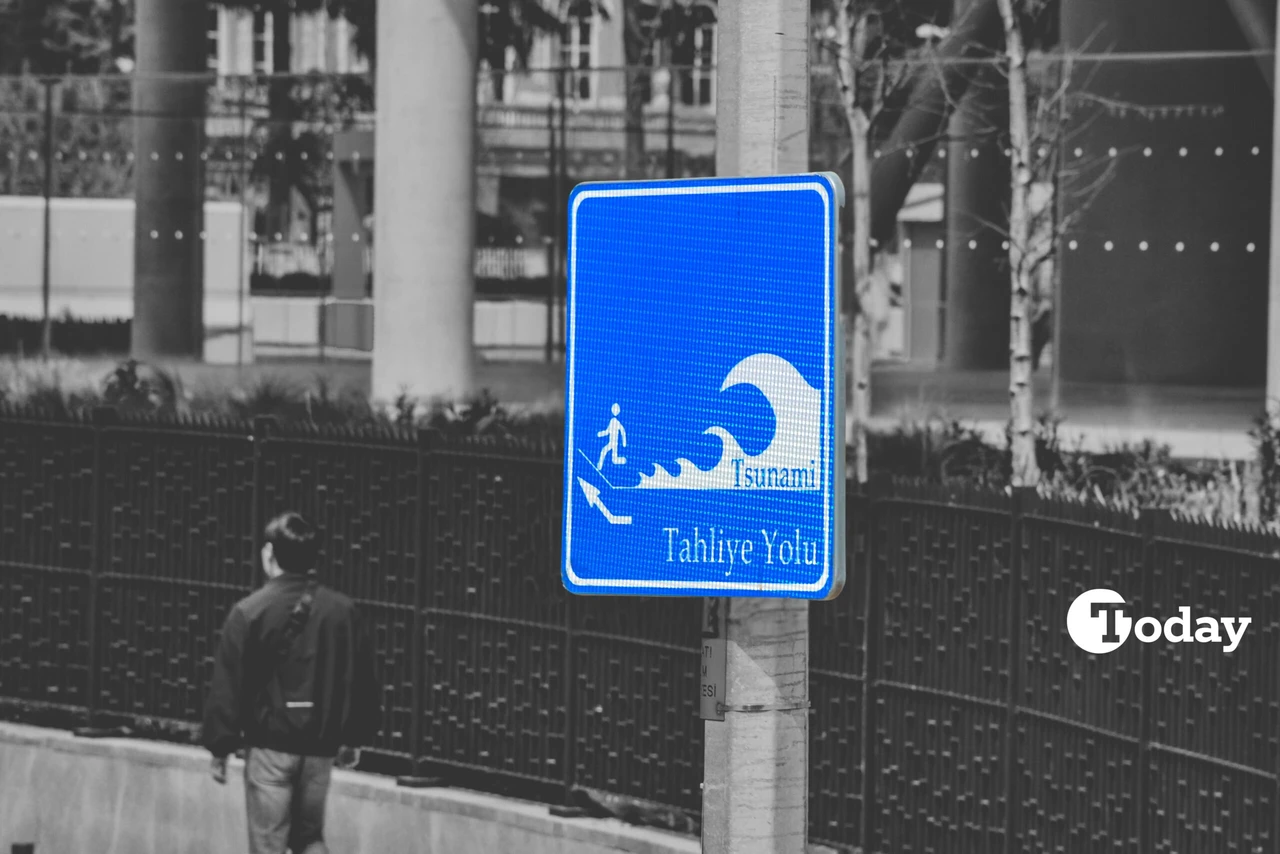Istanbul is not ready for major earthquake—here’s why
 People take shelter at a park in the Sisli district after evacuating buildings in panic following a 6.2 magnitude earthquake strikes Istanbul with the epicenter in Istanbul, Türkiye on April 23, 2025. (AA Photo)
People take shelter at a park in the Sisli district after evacuating buildings in panic following a 6.2 magnitude earthquake strikes Istanbul with the epicenter in Istanbul, Türkiye on April 23, 2025. (AA Photo)
On April 23, a 6.2 magnitude earthquake struck the Sea of Marmara, sending tremors across Istanbul and once again spotlighting the city’s chronic unpreparedness for seismic disasters. The quake resulted in 236 injuries and significant structural damage to 378 buildings.
Authorities issued urgent advisories, warning the public to avoid damaged or aging structures until safety inspections could be completed as a precaution. The April 23 quakes, though moderate in scale, acted as a stress test for the city’s emergency systems, and the results revealed alarming deficiencies.
Now the incident has reignited public debate about Istanbul’s emergency infrastructure and governance. Although it is not clear what magnitude and when the next one will come, there is only one agreed-upon consensus for when it does: Istanbul is not ready yet for a major earthquake. The reasons involve deficiencies in disaster management, including a large number of buildings that are certain to collapse, from public education to urban planning.
Lack of assembly zones: Nowhere to gather, no one to guide
One of the most immediate issues reported during the earthquake was the lack of designated gathering areas. Across many districts, residents did not know where to go for safety or information in the immediate aftermath.
Although the Istanbul Metropolitan Municipality previously announced a network of emergency assembly areas, these zones remain largely unmarked and inaccessible. In newer neighborhoods, such areas are either unknown to residents or physically nonexistent due to poor urban planning.
The absence of visible, well-maintained assembly zones significantly hinders emergency coordination and delays aid delivery. In a major disaster scenario, this could lead to chaos, missed rescues, and unnecessary casualties. One of the things that the earthquake revealed is that, aside from schoolyards, there are very limited places for people to go.
In the Middle East, cities like Tel Aviv have tsunami warning systems along the coastline. Despite being a city of coasts and facing the possibility of a severe earthquake that may create a mass of water that could hit the coast, Istanbul’s infrastructure is far from ready.
Communications breakdown: Mobile networks collapse when needed most
Another critical failure was the widespread collapse of mobile networks during the quake. Residents attempting to reach family members or emergency services were unable to get through as the telecom infrastructure buckled under the surge in usage.
The lack of redundancy in communication systems severely hampers real-time coordination. Emergency responders struggled to deploy units effectively without reliable updates from the ground.
While Türkiye has a relatively modern telecommunications framework, no national-level contingency appears to be in place to ensure communication stability during disasters, leaving both citizens and responders vulnerable in high-stress moments.
After the Feb. 6 earthquakes, citizens, who had to face the same difficulties, jammed the roads today when they could not reach their loved ones.

Traffic paralysis: Istanbul gridlocked as panic sets in
The earthquake immediately brought Istanbul’s roads to a standstill at noon. With no real-time traffic guidance or coordinated evacuation plan, residents flooded the streets to flee perceived danger zones or to reach their loved ones.
Major arteries like the E-5 and TEM highways became impassable within minutes. Emergency vehicles were delayed or immobilized due to gridlock. In many neighborhoods, narrow streets and poorly regulated parking left ambulances with no clear routes.
Istanbul’s urban sprawl and dependency on private vehicles make it particularly susceptible to this type of paralysis. Without pre-established emergency traffic corridors, response times will remain dangerously slow.

Logistical breakdown: No clear exit strategy from the city
Currently, there seems to be no robust logistics plan in place for a large-scale evacuation from Istanbul. In the event of a larger disaster, land-based evacuation routes are insufficient. There are no designated staging areas for mass transport or detailed protocols for relocating displaced populations to safer provinces.
Moreover, coordination between city, provincial, and national authorities remains inconsistent. Disaster management experts like Kubilay Kaptan argue that without a unified evacuation command structure and regional support plans, Istanbul will face an unmanageable humanitarian crisis after a major quake.
Absence of earthquake education: A city untrained in crisis behavior
Despite living in a high-risk seismic zone, Istanbul’s population remains largely untrained in earthquake response procedures. Few institutions organize regular drills, and public awareness campaigns are limited in scope and reach.
This lack of training contributes to panic-driven behavior during tremors. Instead of following safety protocols, residents often make rash decisions, such as running outside or congesting exits, increasing injury risk.
Kaptan emphasizes that routine drills and widespread education could dramatically improve survival rates. Yet these drills are not systematized across schools, workplaces, or residential buildings, leaving the city vulnerable by default.

Fragile housing stock: Millions at risk across Istanbul
Istanbul’s aging building inventory remains one of its greatest vulnerabilities. The city is home to approximately 6.8 million residential units, and around 1.3 million of these are classified as structurally risky, according to the report titled “25 Years of Earthquake in Türkiye” published by Istanbul Metropolitan Municipality (IBB) Department of Earthquake Risk Management and Urban Improvement and Istanbul Planning Agency (IPA) for the 25th anniversary of the Marmara Earthquake.
Of particular concern are 230,000 units identified for urgent renewal, yet little progress has been made in reinforcing or replacing them. Many of these buildings were constructed before modern seismic standards were adopted and remain highly susceptible to collapse.
Media confusion: Inconsistent messaging fuels misinformation
During the critical first hours after the quake, media coverage was fragmented and sometimes contradictory. Some media figures exaggerated risks, while others downplayed them, signaling different acts of handling the moment of the quake, creating confusion and mistrust among the public.
A unified and credible emergency communication protocol is urgently needed. Without it, misinformation will continue to circulate unchecked in future crises, compromising both safety and effective response.
Geographic and district-level disparities: European side most at risk
In a worst-case earthquake scenario, Bugra Gokce, the head of the Istanbul Planning Agency, predicted that 207,000 buildings could be damaged, 95% of them on the city’s European side. Denser urban development in districts like Avcilar, Bakirkoy, and Zeytinburnu needs special attention.
Soil conditions in these areas exacerbate the risk. Loose, reclaimed coastal land tends to amplify seismic waves, increasing the likelihood of severe damage.
Despite repeated warnings, many of these high-risk zones have seen limited investment in retrofitting or redevelopment.
Ineffective mitigation policies
The metropolitan municipality has implemented various risk-reduction programs, including 117 projects completed with a ₺13 billion ($339 million) budget. It also identified 142 zones as priority intervention areas.
However, the implementation seems these efforts are often more symbolic than functional. Building inspections remain inconsistent, and enforcement of safety standards is weak.
Past amnesty laws, such as the 2018 zoning pardon by the then-government, have also undercut reform by legalizing unauthorized buildings without proper inspection. This has allowed dangerous structures to remain occupied, increasing long-term risk.
A country on the brink must act now
The consequences of ignoring the issue are severe. Immediate action is needed across multiple fronts: building reinforcement, evacuation planning, public education, and a centralized emergency communication strategy.
A strong earthquake could render hundreds of thousands homeless and place enormous pressure on rescue operations and emergency shelters, possibly leading to a horror scenario in terms of public safety and security.



